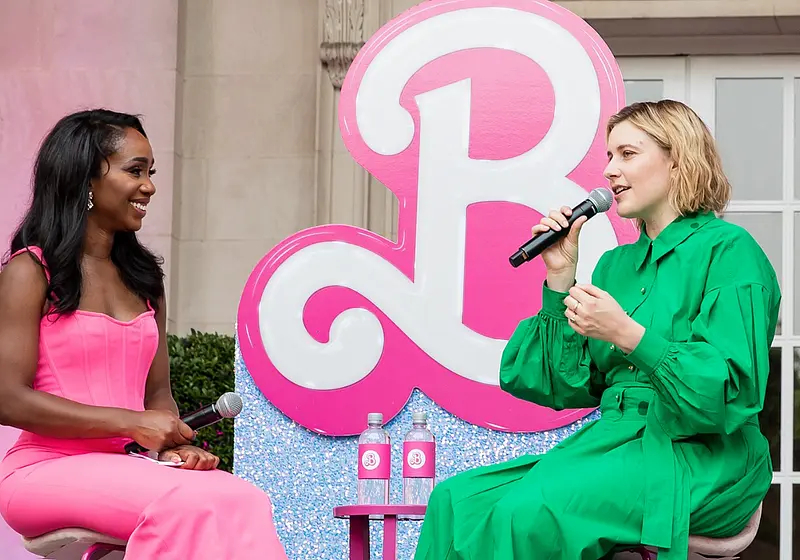It was the Winter of 2014 and Christmas had finally arrived. I had been eyeing the latest Sasha doll - who was naturally my favorite, with Jade being a close second. My mom had gotten me three out of the four and I was so excited to see the nostalgic figures of my childhood flood my memory.
I'd seen them on the pages of books, featured in video and board games, and watched them in movies and TV shows. A smile painted my face as I saw the dolls that I loved so much, the ones that shaped my childhood and encouraged my personal "passion for fashion". And just like me I'm sure that if you were a girl born in the mid 90s to the early 2000s then you probably remember the Bratz dolls as well.
These dolls were diverse, savvy, fashionable, sassy, smart, and simply amazing. And to put icing on the cake - also Barbie's biggest rival. Not only did they change the way dolls were created and dressed, but they managed to become one of the biggest pop culture and fashion icons of our generation.
Let us slide into your dms 🥰
Get notified of top trending articles like this one every week! (we won't spam you)Barbie Gains A True Rival
Before we had Bratz, we had Barbie. You know the girl that could do anything and owned the largest wardrobe any girl has ever seen? The girl with 30+ careers?
Barbie was good, but she wasn't relatable enough, she was okay and no one really had any thing against her. But she didn't really manage to capture the essence of our generation at the time. Barbie was too safe, almost too "conservative" for the upcoming generation of girls. She didn't have that sass factor to really set her apart.
Now enter Bratz. Bratz were created for teenage girls who still loved to play with dolls, but were a bit too old to play with a Barbie. Bratz was its generation- Sasha, Yasmin, Jade, and Cloe were unique and culturally diverse, working well together.
Unlike Barbie, they were made to truly mold the generation of that time. Because of how revolutionary Bratz were- they became "frenemies" with Barbie, rivaling her sales and the attention of young ladies around the world. Bratz gave Barbie something to compete with- from dolls to games and even tv shows and movies.
The Bratz were just as smart, hardworking, and inspirational as Barbie was. However, Bratz had a certain sass about them that Barbie didn't- they were willing to go the miles that Barbie felt like she couldn't. Bratz was diverse and chic and also managed to let every doll in their line shine without stealing the spotlight- unlike Barbie.
While Barbie had become more diverse by this time, she always managed to steal the spotlight in whatever she was in. Her notoriety outshined her counterparts.
The Bratz were just as great role models as Barbie was. They showed that girls could have a "passion for fashion" and still be smart, responsible, athletic, and kind. Not to mention how many barriers their clothes and makeup were breaking in the fashion and toy industry.

Take the Quiz: Which Female Character Trope Do You Belong To?
Whether it's in film, TV, or literature, you've likely come across these female character tropes. Take this quiz to discover which one best matches...
Groundbreaking or Just Controversial?
Maybe too many barriers for some... Parents were misunderstanding. A lot of them weren't happy with Bratz. They couldn't comprehend how a doll could dress like 'that' and still be considered a role model for children.
But that's the thing, Bratz weren't made for children- they were designed to replicate the teens of that era. Bratz were created so that teens who still loved dolls could still play with dolls and not feel childish. The creator never meant for the dolls to be for younger children, since his fifteen year old niece, who loved dolls, was the main inspiration for the line from the very beginning!
But children also seemed to want these cool, chic dolls, putting parents in a bind. They didn't want to upset their children, but they definitely didn't want to support these "risqué" dolls. Many parents felt like the dolls were promoting a profane message to their young children.
But the ironic part is that had a lot of these parents managed to see past their deep disapproval for Bratz then they would've saw the countless books by Bratz teaching young ladies about puberty, dating advice, beauty and hair advice. They gave advice to their audience on how to deal with their emotions and other complex situations. Being controversial was never the intention of Bratz and despite the many parents raving over what they deemed to be a "controversial" doll, Bratz still managed to skyrocket and take over the nation as a fan favorite.
Truly Iconic
But the real question here is how did Bratz manage to go from being just dolls to multimillion-dollar pop culture icons? Well, the answer is quite simple. Bratz had their own style and were breaking boundaries in the fashion industry.
Their clothes were a fun, unique twist on the late 90s/early 2000s aesthetic that still rocks the fashion world to this day. If you look up "Bratz aesthetic" a plethora of photos and videos pop up. I mean who would've known that some of our most iconic MET Gala and music video looks originated from Bratz?
Or that Bratz would be the inspiration, whether intentional or unintentional, for the makeup and fashion looks of a plethora of celebrities? For example, Kylie Jenner and Rihanna copied the Bratz makeup style and probably didn't even realise! Or even Safiya Nygaard's "I Dress Like A Bratz From The Early 2000s" video where she replicates iconic Bratz looks.
Not to mention that growing up I also found myself pulling inspiration from Bratz, as a young girl they were my fashion idols. I actually still use my Bratz book for makeup and hair advice!
Often times art imitates life- but Bratz is not only art imitating life but life imitating art. Bratz were innovative, daring, and self-aware. They cemented themselves in pop culture for decades to come. I, as a 2000s kid, will definitely love and cherish them for a lifetime and I'm sure that many others will as well.













.jpeg)





